Violation of soil acidity is primarily fraught with the fact that fertilizers are not absorbed by plants due to the acidic environment. In addition, some types of beneficial bacteria and microorganisms cannot exist in such a land, which negatively affects the amount of the crop grown.
Acidic soil is characterized by increased density, which makes the process of oxygen supply to the roots difficult, acid-base balance is disturbed in it.
Content
Determination of acidity and timing
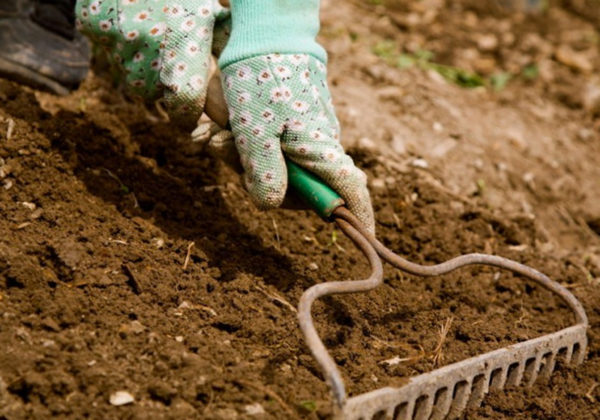 At home, the analysis can be carried out at any time from the beginning of spring to the end of autumn, when there is no frost and you can take a sample of land from the plot for measurement. No complicated fixtures are required.
At home, the analysis can be carried out at any time from the beginning of spring to the end of autumn, when there is no frost and you can take a sample of land from the plot for measurement. No complicated fixtures are required.
With a litmus test
To determine the acidity, therefore, a litmus test is needed, which can be purchased at a pharmacy or shop selling chemicals. On its packaging is a scale whose color indicates the level of acidity: from red (acidic pH) through yellow (neutral pH) to blue (alkaline pH). Necessary actions:
- At different parts of the garden take 1 tsp. land.
- Prepare several servings of solutions with distilled (boiled) water 1: 1, mix.
- Dip a piece of paper in all solutions.
- Coloring the litmus will accurately show the acidity level of this area.
Red color indicates acidic soil, yellow - neutral, green - alkaline (very rare).
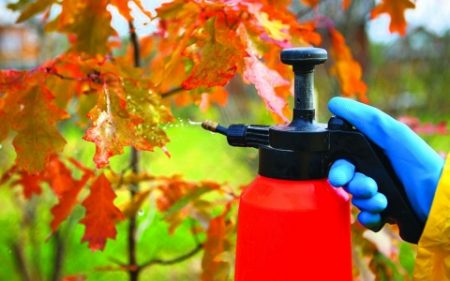 You may be interested in:
You may be interested in:Determination of acidity using vinegar
The usual 9% vinegar will do. A little earth is poured on the glass and vinegar is dripped. If a reaction occurs with the release of carbon dioxide in the form of bubbles, then the earth is alkaline. With a small amount of gas released, the earth is considered alkaline, and if there is no reaction, the soil in the area is acidic and needs to be adjusted.
With grape juice
In a glass with juice is placed 1 tsp. land from the plot. If there is a color change or a reaction in the form of bubbling, then the land on the site is neutral, if there are no changes, the soil is acidic.
Using plants
To understand that there is excessive acidity on the site, a number of weeds will help. These include:
- horsetail;
- mint;
- moss;
- wood lice
- horse sorrel.
If these plants are found in the garden plot, measures must be taken to reduce acidity.
Acidic soil: what to do
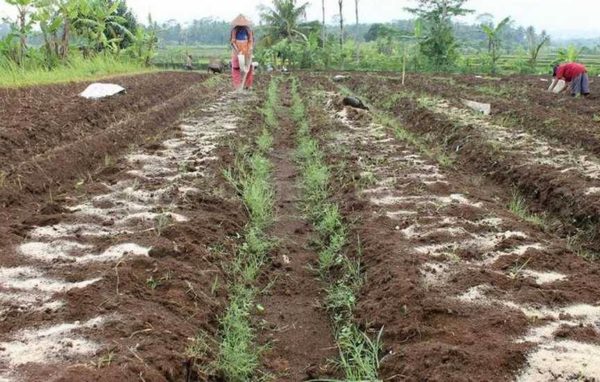 With excessive soil acidity it is reduced artificially. They make certain components: dolomite flour, slaked lime, chalk, gypsum.Siderata is also sown, which increase the permeability of the soil, fight weeds and improve the quality of the soil.
With excessive soil acidity it is reduced artificially. They make certain components: dolomite flour, slaked lime, chalk, gypsum.Siderata is also sown, which increase the permeability of the soil, fight weeds and improve the quality of the soil.
Cultures that prefer different types of acidity
Some plants are able to tolerate a slight acidity of the soil, but the bulk of the vegetables grow qualitatively and bear fruit only on neutral soil. Vegetables that prefer slightly acidic and neutral pH of the earth:
- Tomatoes
- carrot;
- Pancake week crops;
- legumes.
On slightly acidic soils grow and bear fruit:
- potatoes;
- greenery;
- all kinds of cabbage;
- beet.
Lovers of low pH are many among the flowers. They include:
- lupins;
- sunflowers
- roses;
- nasturtiums;
- poppies;
- purslane;
- Zinnia
- cloves;
- fern.
At fertilizer application, flowers grow and develop beautifully.
How to increase the acidity of the soil
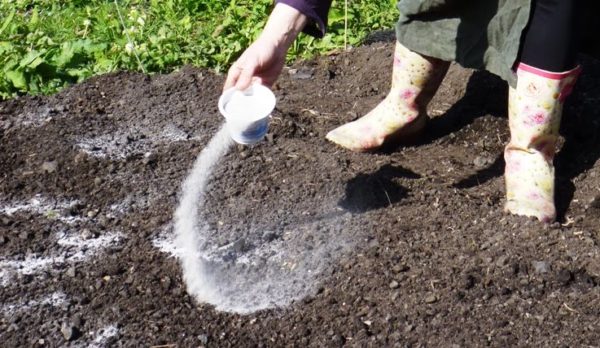 In some cases, the soil has a pH above 7.5. Such land is characteristic of steppes, forest-steppes, which has a limestone foundation and has excessive salinity. Under these conditions, trace elements such as iron, boron, manganese form insoluble bases with alkali, which plants cannot absorb. Lack of nutrition is seen by the yellowish color of the leaves (chlorosis).
In some cases, the soil has a pH above 7.5. Such land is characteristic of steppes, forest-steppes, which has a limestone foundation and has excessive salinity. Under these conditions, trace elements such as iron, boron, manganese form insoluble bases with alkali, which plants cannot absorb. Lack of nutrition is seen by the yellowish color of the leaves (chlorosis).
Organic Acidity
As an organic additive to reduce the pH and increase the acidity of the soil are used:
- fresh manure;
- compost;
- high peat;
- distillation;
- moss sphagnum.
Organic additives slowly acidify the earth, but contribute to improving its composition, moisture and air permeability, have in their composition nutrition for plants.
Increasing Acidity with Mineral Components
Mineral fertilizers cope with the task of acidification much faster.
- Colloidal sulfur is able to reduce pH by 2 units, if you add 1 kg per 10 sq. M during autumn digging.
- Iron sulfate reduces the pH by 1 unit when making 0.5 kg per 10 sq.m.
- Ammonium nitrate, when introduced into the ground in autumn, can slightly increase acidity.
It can not be applied in the fall under plants.
Use of acid solutions
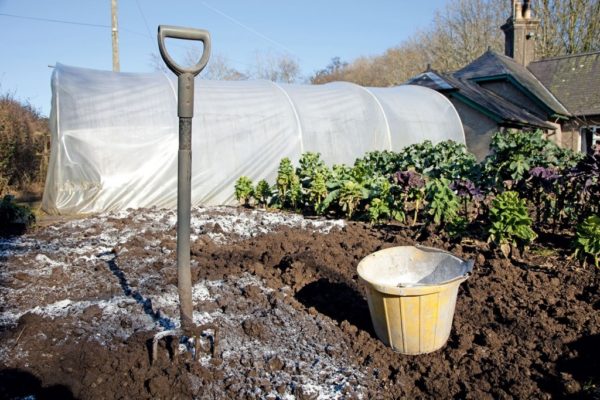 For lovers who grow blueberries, hydrangea in their plots, one can not do without using weak solutions of sulfuric acid, citric acid or acetic acid as a solution for irrigation. 10 ml of water of sulfuric acid will require 50 ml, or 2 tsp. crystalline lemon, or 100 ml of 9% vinegar. Ready solution is watered plants under the root, bypassing the leaves.
For lovers who grow blueberries, hydrangea in their plots, one can not do without using weak solutions of sulfuric acid, citric acid or acetic acid as a solution for irrigation. 10 ml of water of sulfuric acid will require 50 ml, or 2 tsp. crystalline lemon, or 100 ml of 9% vinegar. Ready solution is watered plants under the root, bypassing the leaves.
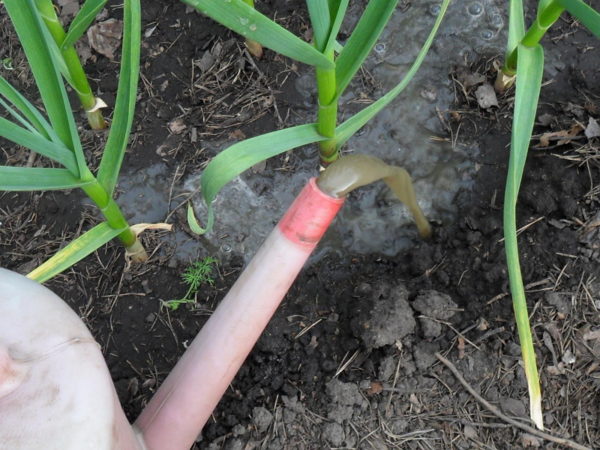 You may be interested in:
You may be interested in:How to lower soil acidity in autumn
There are several ways to deoxidize the soil in the fall. For these purposes, apply:
- siderates;
- dolomite flour;
- slaked lime;
- a piece of chalk;
- ash;
- gypsum.
Each method can be used.
Siderate deoxidation
Advocates of natural farming are advised to lower the acidity of the soil by sowing green manure, which in addition to raising the pH:
- inhibit weed growth;
- enrich the soil with nitrogen;
- improve the composition of the soil, making it more loose;
- help in getting rid of pests (wireworms, nematodes);
- serve as organic fertilizer.
After harvesting, in the fall plant:
- white mustard;
- phacelia;
- rye;
The liberated land is leveled with a rake and the seeds of green manure are scattered on it.
Deoxidation with dolomite flour
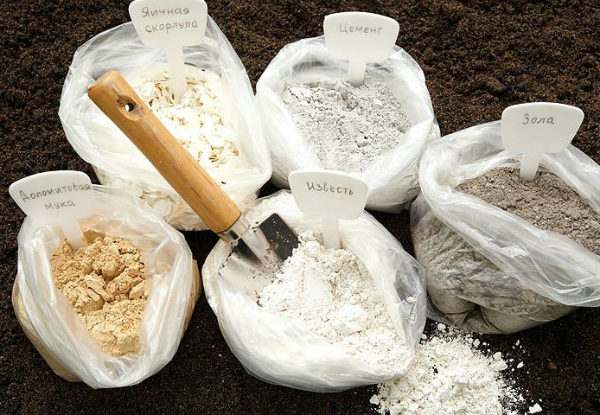 Dolomite flour is obtained by crushing dolomite. The composition contains magnesium and calcium, which are washed out of acidic soils. Deoxidation of the soil with dolomite flour leads to the solution of a number of problems:
Dolomite flour is obtained by crushing dolomite. The composition contains magnesium and calcium, which are washed out of acidic soils. Deoxidation of the soil with dolomite flour leads to the solution of a number of problems:
- enrichment of the soil with nutrients;
- increased growth of garden crops;
- sour land returns to life, which has become unusable.
Negative results are obtained with:
- non-compliance with the dose;
- co-administration with various incompatible preparations (ammonium nitrate, urea, superphosphate, manure);
- pH above 6.
Depending on the pH of the earth, 30 to 50 kg of dolomite is added per hundred square meters in the fall when digging after harvesting. In the spring, the introduction of dolomite flour occurs 2 weeks before planting vegetables. Dolomite flour is added to acidic soil once every 6 years.
Slaked lime deoxidation
Deoxidation of the soil in the fall is carried out using hydrated lime or fluff in the fall after harvesting. Lime is scattered on the surface of the earth, spending 500 g per 10 sq.m. Re-treatment is carried out after 3-5 years.
Chalk deoxidation
Chalk has a natural origin and is often used as a deoxidizing agent. It is scattered in the spring right in the snow. Melt water, dissolving its grains, carries them to the ground. It can be used annually, but in small doses to avoid salinization of the soil.
Ash deoxidation
 One of the natural deoxidizing agents and a source of potassium, phosphorus and many trace elements is ash. Its advantage over the rest is that it can be added during the entire vegetative period. When digging the soil, ash is added in the amount of 1 kg per 1 sq. M, and brought into the hole during planting. She performing several functions, is:
One of the natural deoxidizing agents and a source of potassium, phosphorus and many trace elements is ash. Its advantage over the rest is that it can be added during the entire vegetative period. When digging the soil, ash is added in the amount of 1 kg per 1 sq. M, and brought into the hole during planting. She performing several functions, is:
- deoxidizing agent;
- fertilizer;
- soil improver;
- pest repeller.
Gypsum deoxidation
Gypsum is also used to bring pH to normal. It has one peculiarity, it does not dissolve in water, but in acid, that is, it reacts with acids in the soil and brings the pH to 6-7. With repeated acidification, it reacts again, reducing the acidity of the soil. Application rates range from 400 g on acidic lands, to 100 g on slightly acidic per 1 sq.m.
Frequency of deoxidation procedure
The frequency of use of deoxidants in the area depends on the condition of the soil. On acidic soils, the procedure is carried out once every 4 years, on slightly acidic soils once every 5-6 years. But in order to maintain the pH at the right level, it is necessary to carry out certain manipulations every year. When digging the soil in the spring, a small amount of dolomite flour is added, and when planting the plant, a handful of ash is added to the hole.
Is it always necessary to reduce acidity
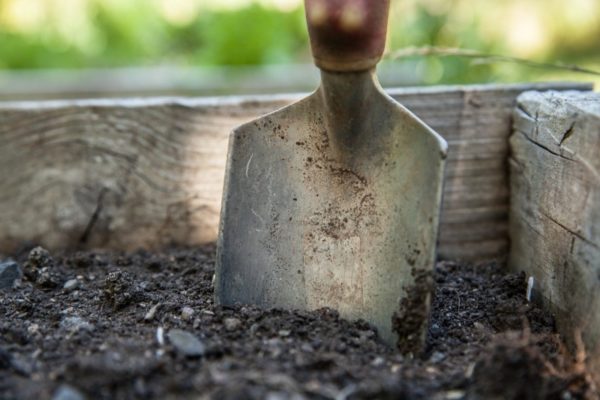 If plants grow on a site that require acidic soil for a comfortable existence, then soil deoxidation is carried out in separate areas or not at all. Grow well on low pH soil:
If plants grow on a site that require acidic soil for a comfortable existence, then soil deoxidation is carried out in separate areas or not at all. Grow well on low pH soil:
- sorrel;
- rhubarb;
- blueberry;
- mint;
- fern;
- rhododendrons.
Most vegetables develop well on slightly acidic or neutral soils rich in nutrients. But too frequent liming leads to an excess of calcium in the soil, as a result of which the root system of plants is inhibited. Therefore, in the spring, experienced gardeners recommend checking the pH of the soil on the site and starting from further measures against this indicator.
Deoxidation and basic fertilizers
When carrying out the deoxidation procedure, several factors must be taken into account:
- when deoxidants are introduced into the ground in the fall, fertilizers are applied in the spring or not used for 2 years;
- it is necessary to observe the exact dosage of the introduction of deoxidizing agents, otherwise manganese, boron, iron will form compounds insoluble in water and not absorbed by plants.
You can control the pH of the soil on your own, and only after receiving negative results go to action and use one of the deoxidizing agents.

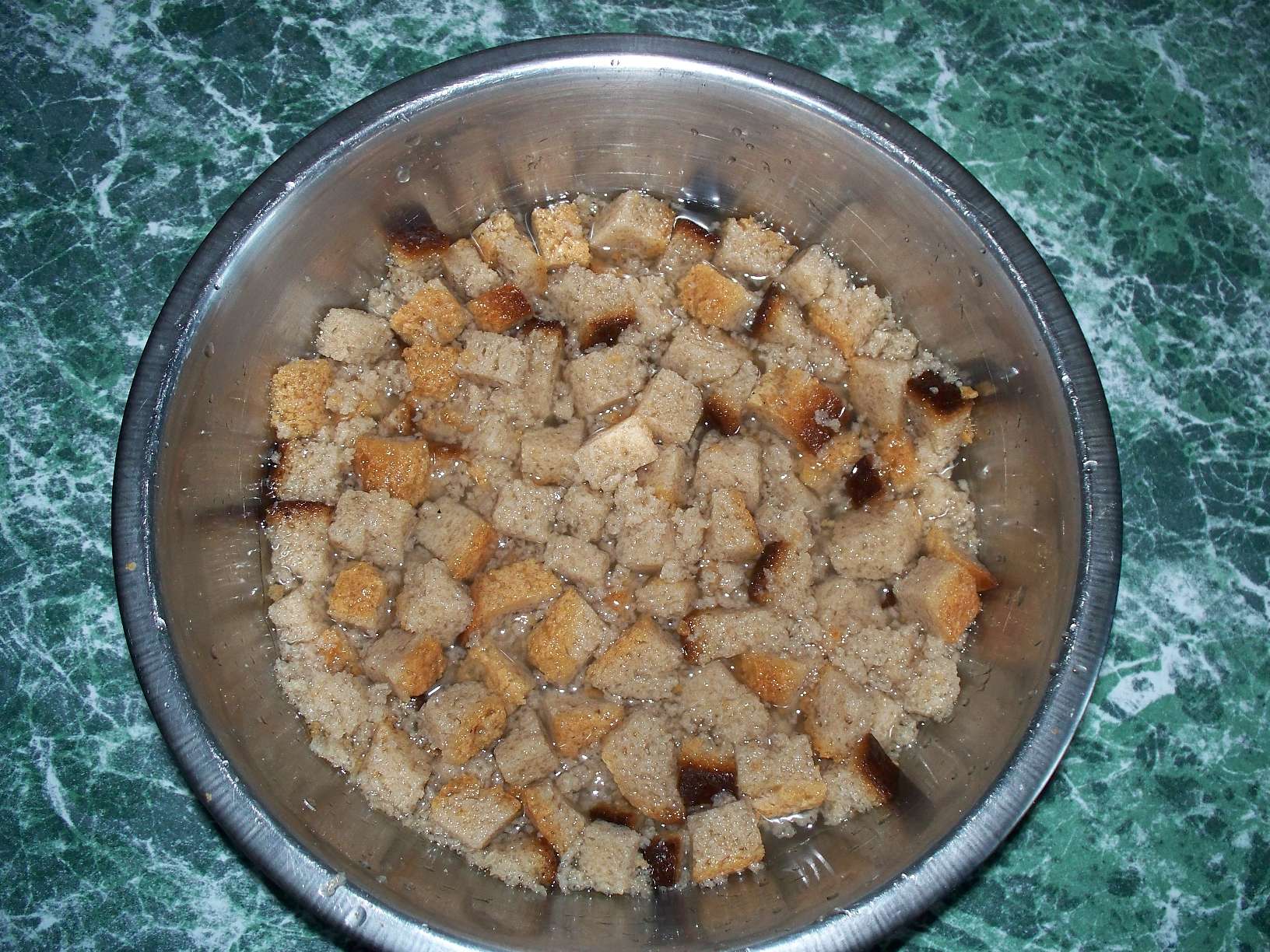 How to make bread infusion for feeding cucumbers
How to make bread infusion for feeding cucumbers Superphosphate: what is it and how to apply it
Superphosphate: what is it and how to apply it What problems can be expected from siderats?
What problems can be expected from siderats? Secrets of the collection, storage and use of eggshells in the garden
Secrets of the collection, storage and use of eggshells in the garden